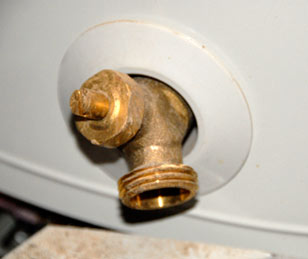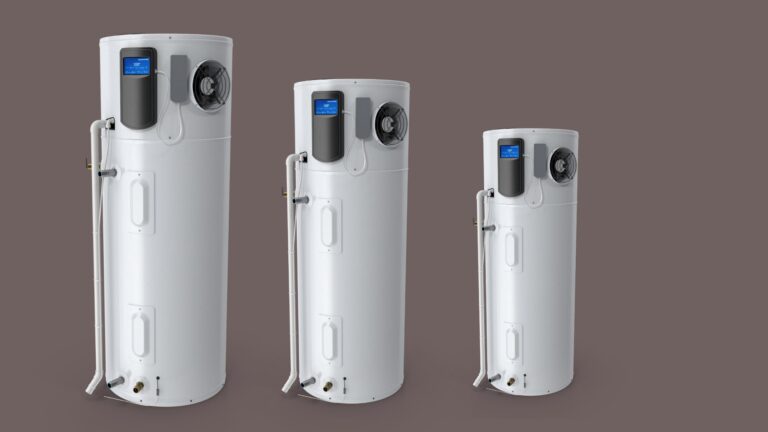Hot Water Heater Leaking From Bottom: What to do Guide?
We all need a water heater to work for us whenever we need them most. Be it for our shower time or for washing in the kitchen, we may need a hot water faucet. But suddenly if you find your water heater in a puddle of water, it can show some dangerous signs. In fact, there may be several reasons why your heater is facing such problems.
There can be both an internal issue as well as several external issues on why this is happening. However, getting your Water Heater repaired should be the main reason. If you have an occasion coming up and neither of the hot water faucets is working, then you may land in some serious trouble. Here is a complete guide for you to follow if your Hot Water Heater leaking from bottom.

How To Empty The Water Heater and Turn Off the Water?
The first thing that you need to do is to turn off the water to stay away from any type of problems. For this, you need to follow the few steps mentioned below:
- The first thing that you need to do is to find out the incoming water pipe. This is connected with the help of a lever or a dial on a pipe with the water heater.
- Now, you need to turn the dial clockwise to lose or close this valve. So the next thing that you need to do is to wait for the water to drain out. The water flows out from the pipe.
- Once the water is empty, you need to shut-off the inlet option. If you do not have any inlet option, you need to close the entire powerhouse of the water heater.
What to Do If Hot Water Heater Leaking From Bottom?
There may be several reasons why your water tank heater is leaking and preventing it will be the major thing to consider. However, it mostly happens because of three major things- the Temperature & Pressure valve, the drain valve and also the internal tank leak.
Here is a complete step by step guide which you can follow to easily repair the Water Heater accordingly.
1. Temperature & Pressure Valve
The Temperature & Pressure Valve is two important safety features of a water heater at any time. In fact, they both are related as when the temperature inside the water heater exceeds the maximum limit, the heater then releases the pressure to open the valve.
This controls the temperature of the water inside the heater. But apart from this, the overflow pipe is also connected with this valve. So this means that if the T&P valve breaks down, the water pressure is applied to the overflow pipe causing it to leak.

Diagnosing the Temperature & Pressure Valve
- You must start by reducing the water temperature. You can do it with the help of lowering the thermostat.
- Now, you need to open the valve of the water inlet and switch ON the water heater.
- Monitor the pipe for a while and check if the leak starts again. If it starts to leak again, the temperature in the heater may be too much. This will cause the Temperature & Pressure Valve to break.
Fixing the Problem
- Check if the power supply is OFF. Now you need to drain off the water present inside the water heater.
- Once it is done, open any hot water faucet. This will allow airflow to the tank.
- Now you need to unscrew the heater and then take out the T&P valve. Replace it with a new Temperature & Pressure Valve and then wrap Teflon on the sides of the new valve.
2. The Drain Valve
The drain valve is responsible for draining out the hot water from the water heater tank. This valve is located at the bottom of the tank. So it works ideally for the maintenance of the drain. So if the tank holds up water, the main purpose of the drain valve is to clear it out.
This allows you to see some moisture growth at the base of the water heater, but it makes sure that the valve gets released at the time to release the pressure. But if the drain valve is broken or loses, you may experience some dripping and some leaks at the base.

In case the drain valve gets loose, you need to open up the pipe and diagnose it. Try to unscrew the pipe and then check for the drain valve. If you spot it, you can use a wrench and tighten the drain valve.
Fixing the Problem
- The first thing that you need to do is to power OFF the water supply and the water heater as well. Make sure that you have cleaned out all the water from inside the tank to get a better response.
- The next thing is to attach a garden hose to the drain valve. This will allow you to drain the water from the pipe so that there is no water remaining inside the water heater.
- Now, once it is completely drained, you need to remove the old drain valve. You can do this with the help of a wrench. Turn the wrench in an anti-clockwise direction to let it go loose.
- Once you take it out, replace the drain valve with a new one. You can wrap Teflon tape on the thread. This makes sure that the drain valve sits tightly onto the hose which prevents the heater from any type of leaking.
- Once you are done with this, it is time to check for leaks. Make sure that you let the water in the tank and it becomes filled before you turn on the power. This will help you to protect the heating elements from damaging.
3. Internal Tank Leak
If the above two methods do not work for you, it must be because of an internal tank leak. The internal tank is made up of steel. Though most of the new water heaters come with stainless steel alloys, it has some chances to form rust. This makes sure that the anode rod is present within the heater that protects the steel.
But with contaminants and time, it starts to get damaged as well. If you are staying in a locality with more contaminants and sediments, it allows destructive elements to enter your water tank.
Thus, it can easily hamper the interior of your tank. The sediments start growing as long as you do not keep it clean. Once the sediments start to form, it creates a high layer of rust as well.
The internal tank of your water heater comes along with a proper mechanism to protect the heating elements from any type of corrosion and damages. But this does not make sure to reduce the levels of contaminants present in the water. If you stay in such an area, your water heater will start consuming contaminants and forming rust.
These rusts will eventually block the drain hose and the overflow pipe which will eventually cause the water heater to start leaking. Regular maintenance is the only key to get rid of these problems. But for this, you may have to open up the water heater and then clean it from the interior.
However, if you are having some problems to get away from it, the one thing that you need to do is to call a professional.
Frequently Asked Questions – FAQs
Q1. Is it Dangerous to have a Leaking water heater?
A1. If you are experiencing water leakage in your water heater, it may just be signs of danger. This is especially for your floors and the surrounding walls. In fact, water leakage can lead to the formation of mold and eventually seep down the foundation of the home.
Q2. Can a Leaking water heater Explode?
A2. There are high chances for a water heater to explode if the heater is powered by gas. If the water is leaking from the base, it is evident that the water heater is also emitting gas pressure. So if there is any sign of ignition, the water heater will explode. So make sure that your water heater has a safety valve.
Q3. Is Sediment in Hot Water Tank Dangerous?
A3. Thankfully, a small number of sediments do form in every water heater because of contaminations. But it is not dangerous. However, if the levels of sediment tend to increase in a short period, it can cause real problems in the pumps and valves. This means that the entire heating system may face threats.
Q4. What happens when a Water Heater Bursts?
A4. When any water heater tends to explode, the tank immediately ruptures and the heated water eventually reaches a high temperature which means that it can easily convert to steam. If the hot waterfalls to the floor, it may immediately damage the floor.
Conclusion
The water heater may start leaking due to multiple reasons and mostly because of sediment formation. This is the reason why regular maintenance of the water heater is very necessary. If you experience such leaks, you can consider getting help from this guide on Hot Water Heater Leaking From Bottom to get the best results.
However, if this does not work, you can opt to call a professional. You can also check our guide on how to fix Hot water heater leaking from top.







